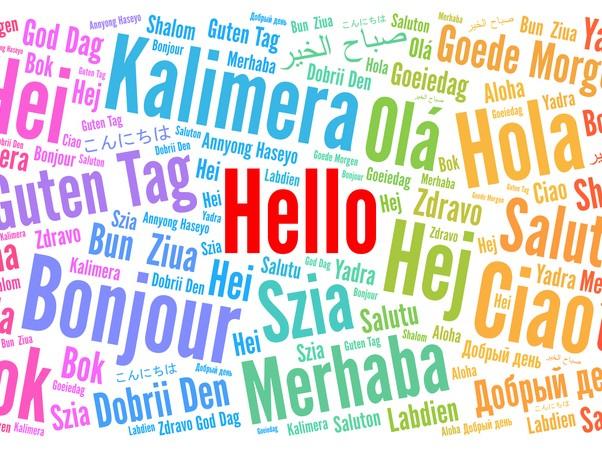
It starts with connection: rethinking the enrolment journey

For decades, higher education enrolment management has centred around a predictable process: attracting attention, nurturing interest and yielding enrolment. But that linear model was built for a different era, shaped for the behaviour of high school graduates moving directly into college. Today, that model is not just outdated – it’s exclusionary.
University students no longer fit a single profile. Today’s learners include adults returning to finish what they started, working professionals balancing coursework with caregiving and first-generation students seeking pathways that feel both practical and personal. This evolution demands more than tweaks to current tactics. It requires a transformation in mindset – one that prioritises emotional connection, flexibility and belonging over volume, velocity and yield.
Traditional enrolment journeys are failing non-traditional learners
The number of US high school graduates – the traditional target of recruitment models – will peak this year and then decline steadily through 2041, according to the Western Interstate Commission for Higher Education (WICHE). By that year, there will be nearly half a million fewer high school graduates annually, signalling a critical demographic shift.
At the same time, the population of non-traditional learners is expanding, bringing new realities and needs to the enrolment landscape. In fact, a recent EducationDynamics report found that more than 90 per cent of online learners had stopped out (temporarily left university) before before re-enroling.
The traditional enrolment journey assumes consistent availability, linear decision-making and a one-size-fits-all progression from awareness to enrolment. But many students move in and out of the process based on life circumstances. If institutions fail to meet them with empathy, relevance and immediacy, those students may not return.
Student-centred enrolment starts with flexibility and trust
Modern enrolment strategies begin with adaptability. A student-centred approach offers communication channels that reflect the realities of prospective students’ lives: phone, email, chat, video conferencing and text. It also accounts for the prevalence of stop-outs by creating systems that welcome re-entry with support rather than scrutiny.
Institutions that engage students with empathy build trust. Today’s learners don’t just want to know what is offered – they want to feel seen and supported in the process. That trust is built through emotional connections.
Rather than reducing enrolment to prepared scripts and checklists, advisers should be trained and encouraged to build genuine relationships. This means asking deeper questions, offering encouragement and support and gaining a clear understanding of each student’s context and goals. Storytelling plays a key role, highlighting student experiences and outcomes that reflect common challenges and shared resilience. When prospective students see themselves in those stories, it normalises doubt and reaffirms potential.
- Spotlight guide: Catching students before they fall
- How to help students with widely varied prior education to thrive in first year
- Gatekeepers or greeters? We must demystify university for first-gen students
Personalisation requires more than a name
True personalisation is about understanding. It means recognising students’ priorities, honouring their timelines and reinforcing their goals at every stage. When done well, it includes:
- Assigning a dedicated adviser from enquiry through enrolment
- Ensuring seamless transitions to academic advising post-enrolment
- Tailoring every conversation to reflect the student’s unique situation
- Building a community where learners can connect with peers and alumni
Every interaction should feel intentional. Prospective students need to feel they are the adviser’s only priority during each engagement. That level of care transforms the experience from transactional to meaningful.
Technology, for instance, can support this approach. Nearly 70 per cent of prospective students now cite an institution’s website as the primary influence in their decision-making, according to Modern Campus. Yet many websites still bury critical information or fail to offer responsive tools such as online chat. Simplifying navigation and expanding self-service options improve access and demonstrates respect for students’ time.
Reframing the role of enrolment teams
However, a student-centred enrolment model requires more than technology. It requires cultural change. Enrolment teams are often the first point of contact a student has with an institution. That interaction sets the tone for the entire relationship.
To foster this shift, enrolment leaders must prioritise coaching, feedback and continuous learning. Advisers need development in emotional intelligence, active listening and culturally competent communication. Institutions that support their teams in engaging authentically strengthen not only student recruitment efforts but student satisfaction and retention.
When teams are empowered to build trust, the institution’s values are reflected in every conversation.
Advice for enrolment leaders looking to evolve
Start by removing prepared scripts. Train teams to listen before guiding. Prioritise investments in communication platforms that offer flexibility and asynchronous options, especially for working adult learners who can’t always engage in real time.
Also, consider offering credit for prior experience and stackable credentials, which provide students with more efficient, career-aligned pathways. These strategies not only improve accessibility but help institutions better support students with diverse goals, timelines and life circumstances.
Looking ahead: from process to partnership
The future of enrolment lies in cultivating partnerships. The institutions that will succeed are those that meet students with care, engage them with purpose and support them with flexibility.
That means faster outreach, more accessible platforms and a deep human approach to engagement. It means advisers who listen, adapt and serve as the bridge between uncertainty and possibility.
The traditional enrolment journey may be fading but the opportunity to build something better is right in front of us.
Agnam Memeti is chief enrolment and student support officer at DeVry University.
If you would like advice and insight from academics and university staff delivered direct to your inbox each week, sign up for the Campus newsletter.


